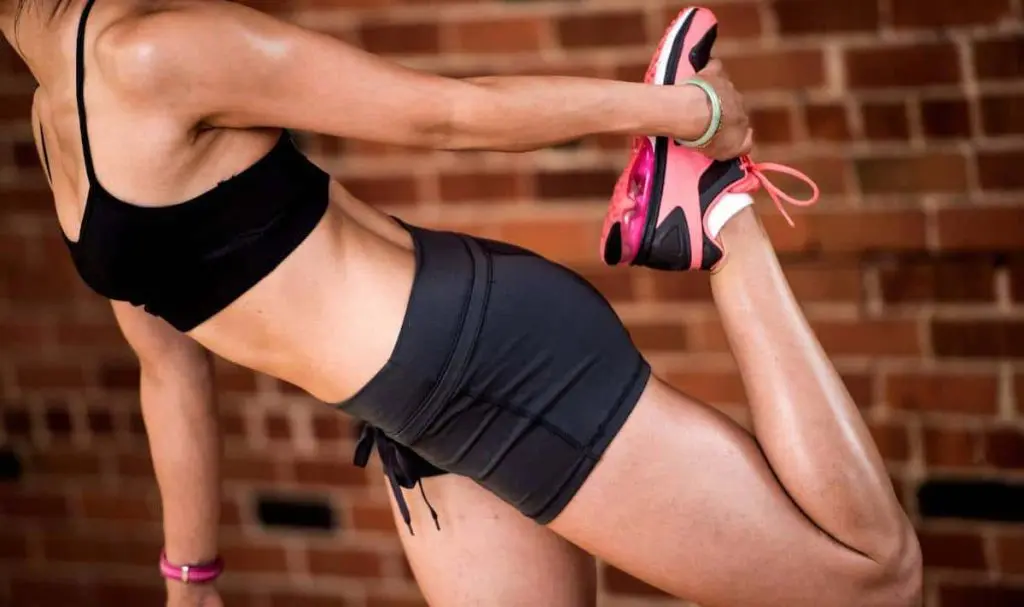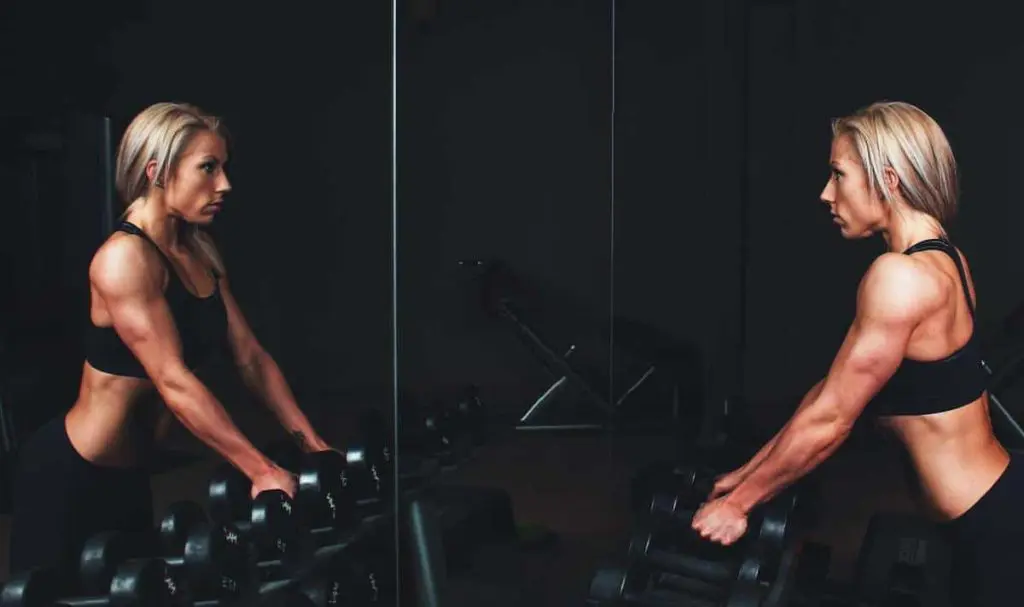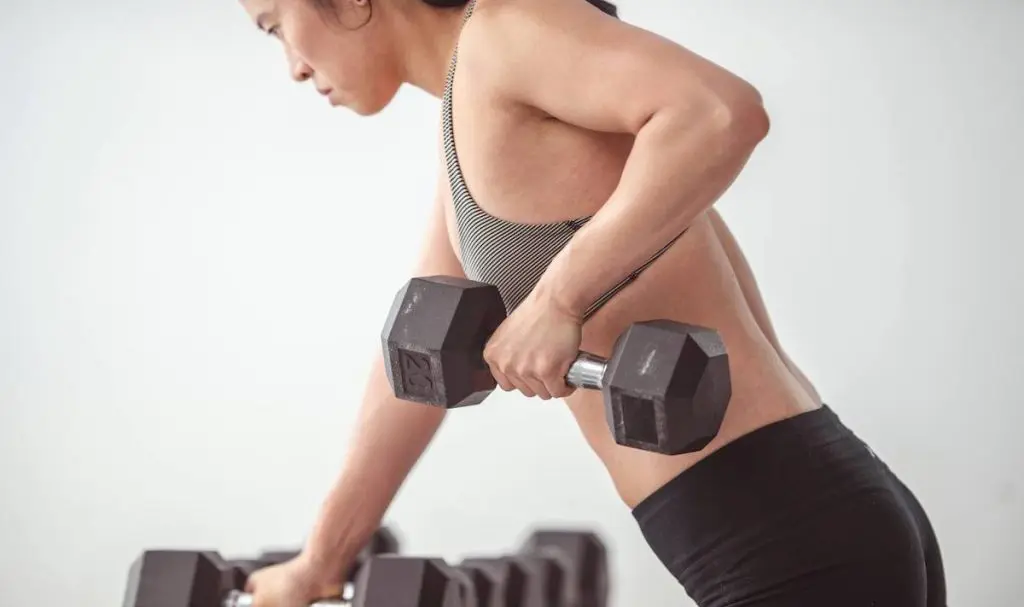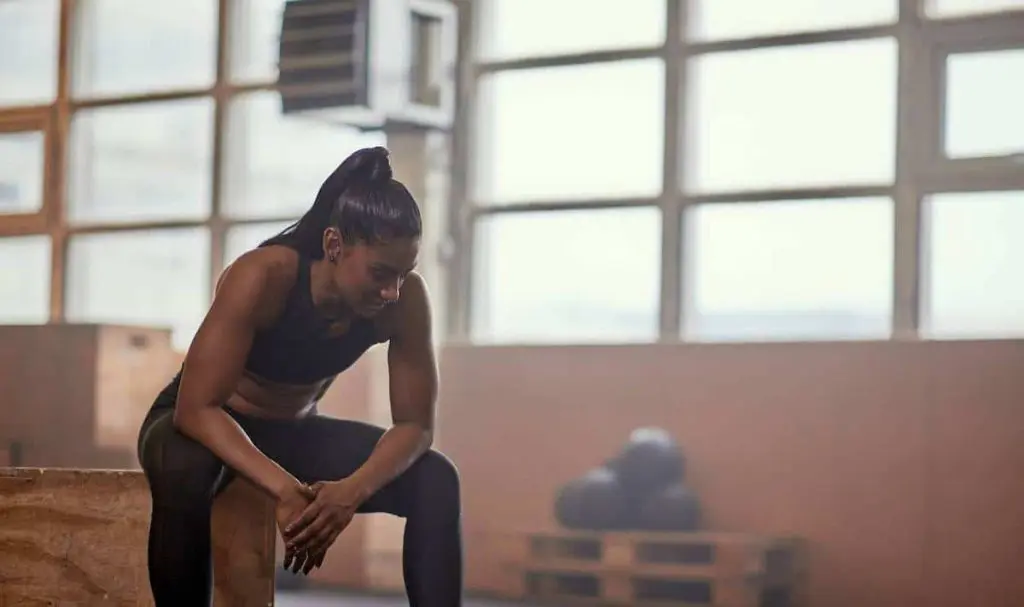
The best online fitness resource you'll ever need. We filter out the BS to ensure you meet your health and fitness goals!

The best online fitness resource you'll ever need. We filter out the BS to ensure you meet your health and fitness goals!

If you’re a female and want to develop a toned, sculpted physique, then our 12 Week Female Bodybuilding Workout Plan is for you!
This program is tailor-made for the ladies, developed to target and tone areas that many women focus on these days in the gym.
The program concentrates on hips, legs, and shoulders, but all the major muscles get a workout too.
Get ready to work hard and rock your clothes.
Jump to the workout plan now!
Alternatively, you can download the free PDF using the link below:
| Program style | Bodybuilding |
| Program duration | 12 weeks |
| Target Gender | Female |
| Workout duration | 1-2 hours |
| Scheduling | 5 day split |
| Goal | Build and tone muscles |
| Level | Beginners to advanced |
First off, you can expect to tone up and add appealing shape to your muscles.
Body types differ. There’s no workout plan on the planet that can take a female with a long waist and shorter legs into a long-legged lady with an X-shaped upper body profile.
Ain’t gonna happen and any program that claims to be able to is, well, just a lie.
What you can expect is muscular development of those key body parts that will add shape and sex appeal, and that will make you feel more confident in the clothes you choose to wear.
If you follow this program properly with the right degree of intensity, and excellent exercise form, you can expect firm, lifted glutes, shapely quads, calves that pop when you wear heels, and rounded deltoid muscles that look good from all angles.
If by “Will I lose fat” you mean “Will I be less fat after doing this program for 12 weeks?”, the answer is “No”.
Fat loss is a difficult but simple matter of consuming less energy while getting the right nutrition in the process. A mentor of mine said, “You can’t out-train a bad diet”.
There are a few directional statements you can use to guide your nutrition. They work well over time. You cannot expect to lose years of fat gain in 3 months.
Our Female Bodybuilding Workout Plan breaks down like this in summary:
| Day | Split |
|---|---|
| 1 | Legs, Arms |
| 2 | Shoulders |
| 3 | Rest |
| 4 | Back, Glutes, Calves |
| 5 | Chest |
| 6 | Cardio, Abs |
| 7 | Rest |
Leg, Back and Glute day will likely be the most strenuous, so they’ve been strategically placed them such that your leg and posterior chain muscles have a chance to recover before you turn around and work them again.
Pay special attention to muscle fatigue and soreness. If you need to back off on one day, back off the cardio for a shorter duration, or do one fewer sets.
You can also regress your cardio by opting for the treadmill instead of the stairclimber, or setting the treadmill to a lesser angle.
Long walks, while not mentioned in the program, is a terrific way to get LISS (Low Intensity Steady State) cardio. A long walk would be something on the order of 5000 to 10,000 steps at a single stretch. (5000 steps over the course of a day doesn’t really count.)
Knowing “when to say when” takes a lot of experience, as in years. In general, you’re better off under-training a bit than over-training. Just make sure you’re not fooling yourself into doing too little–or too much.
Get ready for the toughest workout of the week. Leg-Arm Day drills down on glutes and legs, and tosses in the arm work since it’s overall less taxing. Leg Day hits the quads and hamstrings with a healthy dose of glutes. But stay tuned for Day 4 when we torch the glute muscles.
Hit this day hard. You’ll appreciate the results.
I mentioned before that this program aims to sculpt deltoids that look good from every angle. I selected exercises that have been documented to isolate the individual muscles and muscle regions that will help accomplish just that.
Glute development is the cornerstone of this 12 week ladies’ routine. You’ll need to dial up the intensity to get through it correctly.
After you finish with your hip work, you’ll move on to your back. Your back will have already warmed it up with the isometric holds that RDLs demand.
Some tried-and-true upper back exercises are included here to add strength and shape, and to contribute to a balanced upper body look, including the muscular seam that runs along the back, top to bottom.
Quick note here about calf raises. Use a long pause in the bottom part of each rep when the calf is stretched. Try a five to 10 second pause. There’s interesting research performed on the calf muscle specifically that suggests that prolonged stretch can build muscle thickness.
The study did not look into a long stretch during sets of calf raises. However, taken directionally, a longer loaded stretch at the bottom of each rep hypothetically should produce more muscle growth.
Regardless, calf raises should be performed slowly and under control. Bouncing up and down is both pointless and ridiculous.
Chest Day is short and to-the-point. These exercises work the fan-shaped pectoralis major from top to bottom, adding tone along your collar bones and mid-chest.
There are only three exercises with a total of 15 sets including the warm-up and prep sets, but if you do these right, they will more than get the job done.
Your Cardio-Ab day will focus on some general fitness while getting you some of the cosmetic benefits you’re looking for.
Specifically, we’ll hit the glutes and calves again with the stairclimber or the treadmill set at a steeper incline, and focus in on the visible muscles of the core.
You may notice that Leg Raises are absent. That’s by design. This is because leg raises *do not* work the abs dynamically. There is some isometric contraction of the abdominals as they work to stabilize the forces on the lumbar spine.
The muscles that raise the legs lie deep in the abdomen, behind the internal organs. The fallacy of leg raises comes from exercisers reporting that they “feel” leg raises in their mid-section. Indeed they will.
This is because those muscles will fatigue and develop a lactic acid burn just like any muscle will and it’s felt in the mid-section. Unfortunately for these people, the muscles they’re working will never be seen (unless they have abdominal surgery).
The muscles you’ll work in this program and the ones you can see with your top off or when your mid-section is exposed (bikinis, midriff tops, etc).
Take it easy on Day 7 ladies, and get ready for another week of hard, productive bodybuilding.
In summary, this program works on all the major skeletal muscle groups but focuses on the ones that ladies tend to care about most, namely hips, calves, shoulders and upper arms.
Rest days are strategically inserted to allow for the recovery needed to see the benefits of the hard work.
| LEGS / ARMS | Warm up | Set 1 | Set 2 | Set 3 | Set 4 |
| Air squats | 30-50 | ||||
| Heel-elevated DB squats (Goblet or at side) | 20 | 12-15 | 10-12 | 10-12 | 8-10 |
| Leg Extensions | 20 | 12-15 | 10-12 | 10-12 | 8-10 |
| Romanian Deadlift (RDL) (Hex bar or DB) | 20 | 10-12 | 10-12 | 10-12 | 8-10 |
| Leg Curls | 20 | 10-12 | 10-12 | 10-12 | 8-10 |
| Cable Triceps Extensions | 20 | 15-20 | 12-15 | 10-12 | 8-10 |
| Biceps Curls, single arm | 20 | 15-20 | 12-15 | 10-12 | 8-10 |
| Hammer Curls | 20 | 15-20 | 12-15 | 10-12 | 8-10 |
| SHOULDERS | Warm up | Set 1 | Set 2 | Set 3 | Set 4 |
| Side Lateral Raises (Cable or DB) | 20 | 15-20 | 12-15 | 12-15 | 10-12 |
| Thumbs-Up Front Raises (Cable or DB) | 15-20 | 12-15 | 12-15 | 10-12 | |
| Rear Delt Cable or Seated Reverse DB Flyes | 15-20 | 12-15 | 12-15 | 10-12 | |
| High incline DB or Smith Machine Presses | 20 | 15-20 | 12-15 | 12-15 | 10-12 |
| Shrugs (Cable or DB) | 20 | 15-20 | 12-15 | 12-15 | 10-12 |
| Scapula “Kelso” Shrugs | 20 | 15-20 | 12-15 | 10-12 | 10-12 |
| DB “Y” Raises, Plate Raises, or Lu Raises | 20 | 15-20 | 12-15 | 10-12 | 10-12 |
| GLUTES / BACK / CALVES | Warm up | Set 1 | Set 2 | Set 3 | Set 4 |
| Bulgarian Split Squats | 20 | 15-20 | 12-15 | 10-12 | 10-12 |
| Romanian Deadlift (RDL) | 20 | 15-20 | 12-15 | 10-12 | 10-12 |
| Contra-lateral B-Stance DB RDLs | 20 | 15-20 | 12-15 | 10-12 | 10-12 |
| Cable Glute Hip Abductions (single leg) | 20 | 15-20 | 12-15 | 10-12 | 10-12 |
| Lat Pull-Ins or Pull-downs | 20 | 15-20 | 12-15 | 10-12 | 10-12 |
| Chest Supported Machine Row | 15-20 | 12-15 | 10-12 | 10-12 | |
| Motorcycle Rows | 15-20 | 12-15 | 10-12 | 10-12 | |
| Single-Leg Calf Raises | 20-25 | 20-25 | 20-25 | 20-25 | |
| Toe raises | 20-25 | 20-25 |
| CHEST | Warm up | Set 1 | Set 2 | Set 3 | Set 4 |
| Machine Chest Press | 20-25 | 15-20 | 12-15 | 10-12 | 10-12 |
| Single or Two-arm High-to-Low Cable Fly | 20-25 | 15-20 | 12-15 | 10-12 | 10-12 |
| Single or Two-arm Low-to-High Cable Fly | 20-25 | 15-20 | 12-15 | 10-12 | 10-12 |
| CARDIO / ABS | Warm up | Set 1 | Set 2 | Set 3 | Set 4 |
| Stairclimber or Treadmill on incline. (Can sub sprints) | 30 mins | ||||
| Crunches | 20 | 20 | 20 | 20 | |
| Sit Ups with a Twist | 20 | 20 | |||
| Side Bends | 15-20 per side | 15-20 per side |

Warm up before your workout to prevent injury and practice the movements. Warm-ups are important for anyone and even more crucial for older adults. If you’re a newcomer to the gym but a veteran in another sport, you’ll already understand the value of a good warm-up.
The warm-ups included in this workout program are composed of very light sets of the movements you’ll be doing during the workout, an application of the SAID Principle (Specific Adaptation to Imposed Demands).
You should also get in the habit of stretching the target muscles before actually targeting them. This program will target basically every single muscle you have in your body, so getting those muscle loose is crucial.
There’s nothing worse than getting started on a heavy set of bench press and pulling a pectoral muscle, which could have easily been prevented with some simple chest stretches.

Progressive overload is the first of the three ways you’ll track your progress (the others being the mirror and how your clothes fit).
Progressive overload is simple. Once you’re able to do the specified number of reps with the weight you’ve selected for an exercise, you increase either the load or the number of reps.
In this program, you’ll increase the weight. Rep ranges should remain as-specified.
Here’s an example using a cable machine set at 15kg:
The program says to do 10 to 12 reps. Week 1, you’re able to do 10 good reps using 15kg. By Week 3, you’re able to do 13 reps with good form and could probably do the 14th. Raise the weight so that you’re back to only being able to do 10 reps with good form.
Progressive overload is a well-established method for building muscle and strength, supported by reams of clinical data.

Your muscles will benefit most from the most challenging reps, when your brain is recruiting more muscle fibers for the task at hand i.e., lifting the weight.
Clinical evidence supports that the most-challenging reps – as gauged by the loss of velocity (distance/speed) – are the ones that produce the greatest muscular fatigue.
So, if you connect the dots and agree that muscular fatigue leads to muscular adaptations (meaning strength and size), you can reasonably conclude, as Mike Mentzer did years ago, that intensity does indeed result in density.
Now, it’s important to distinguish between intentionally slow reps (as proposed by some) where the weight is lifted at a predetermined speed. Some call that “tempo training”.
Tempo training is not what we mean when we mention reduced velocity. In our application, reduced velocity is the result of the muscles being unable to push a weight any faster. You can push like crazy and the weight won’t move fast.
A 2021 study examined assumptions on how many reps a set should have depending on its objectives. In other words, it challenged the notion that low-rep high-load sets led to strength, and low-load high-rep sets produce endurance.
In fact it found that muscular adaptations are possible with a wide range of rep continuums.
Taken together, studies on rep continuum and adaptive muscular fatigue lead to a logical conclusion that the number of reps isn’t as important as how hard they are toward the end of each set.
Interestingly, the study mentions that women may have a greater resistance to [muscular] fatigue and that the ladies may be able to use a wider array of rep ranges than the guys. This very workout plan takes that into account.
All of the above assumes good form.

Recovery is as important to physique development as your actual lifting is.
It is the period when your muscles grow in response to the stimulus. Ratio imbalances between stimulus (training) and recovery leads to overtraining and chronic overuse injuries.
Rest days should allow for your muscles to bounce back from your hard work.
Rest days should be days spent completely away from the gym, and not working out at home either. Doesn’t mean you should lie in bed all day; activities of daily living are encouraged.
Your central nervous system (CNS) receives overload during intense training along with your muscles. It’s just as important to let the CNS recover also, since the CNS is what powers your muscles. This is clinically documented.
How long should you wait before doing your next set, or your next exercise?
Research and latest thought among the true experts (not merely influencers) suggests that longer rest periods between sets is best. Rating of Perceived Exertion (RPE) is one way to determine it. To apply RPE, gauge your readiness for the next set by asking yourself, “can I do this next set with equal or greater intensity than the one I just completed?”
If you are a clock-watcher, 3 minutes between intense sets is a good rule of thumb.
How many more reps could you actually do with good form at the end of a set? That is RIR, Reps In Reserve.
The trick is actually knowing your resistance envelope. In other words, how many more reps can you actually do with good form? Many newbies to the gym underestimate this.
Repeating some guidelines I’ve written before:
Download our 12 Week Female Bodybuilding Workout Plan PDF using the link below.
Thank yiu for this! I have been interested in training but didn’t have a clue what program would work and I simply can’t afford a trainer. This is perfect!
You’re welcome Michelle! Glad this was able to help you. Good luck with your training!
Thank you! I’ve been wanting to do some weight training for quite some time and didn’t know where to turn to. With this helpful tool, I was able to put my headphones on print the paperwork and just feel confident going to the gym.
You’re welcome Lou! Glad this was able to help you. Good luck with your weight training journey!
Hi. I read this article and it states *you won’t lose fat* I’m curious on this as I don’t know much about strength training but learning, would like to know , if a female that is 4st overweight does this programme, no health issues {aside from overweight} what will happen to their fat, do overweight people need a different programme? And thank you for the content.
Hi Sara! First of all, thank you so much for reading our content. And good on you for taking on the program.
Dietary changes are necessary for fat loss, regardless of the type of exercise program. So “no”, overweight people don’t need a different program, they need a solid workout program (like this one) combined with sustainable long term changes to their diet.
To be clear, the article states that a person should not expect to lose fat with the 12-week program. A person might see some fat loss, but 12 weeks isn’t long enough, and as already stated, an exercise program alone isn’t enough. It’s pretty much all about what you eat and how you eat for a lifetime.
With that said though, it is worth noting that overweight people generally have more excess body fat than skinny people, which means they have a larger energy reserve to draw upon when losing weight. So yes, in your case, this will lead to initial weight loss when you do this program.
However, factors such as age, gender, genetics, and lifestyle habits (such as diet as mentioned earlier) can also play a role in weight loss. For example, an older person may have a slower metabolism and therefore lose weight more slowly than a younger person with a similar amount of excess body fat. Similarly, someone with a genetic predisposition to obesity may find it more difficult to lose weight than someone without that predisposition, regardless of their starting weight.
Overall, weight loss is a complex process that is influenced by many factors, and the rate of weight loss can vary greatly from person to person. It’s important to focus on making healthy lifestyle changes that can lead to sustainable weight loss over time, rather than comparing yourself to others or expecting rapid results. So your initiative to take this program on is definitely a great one!
I hope that answers your question. Please reply if you need more clarification.
My gym doesn’t have a leg curl machine! What would be a good alternative because I love hammies 😍
Hi Lyddi! First of all, thanks for reading! With regards to your conundrum, I’ll assume your gym has dumbbells? If so, I find the lying leg curl using a dumbbell a pretty good alternative to the leg curl machine. Refer to this to get an idea on how to do it. Hope that helps!